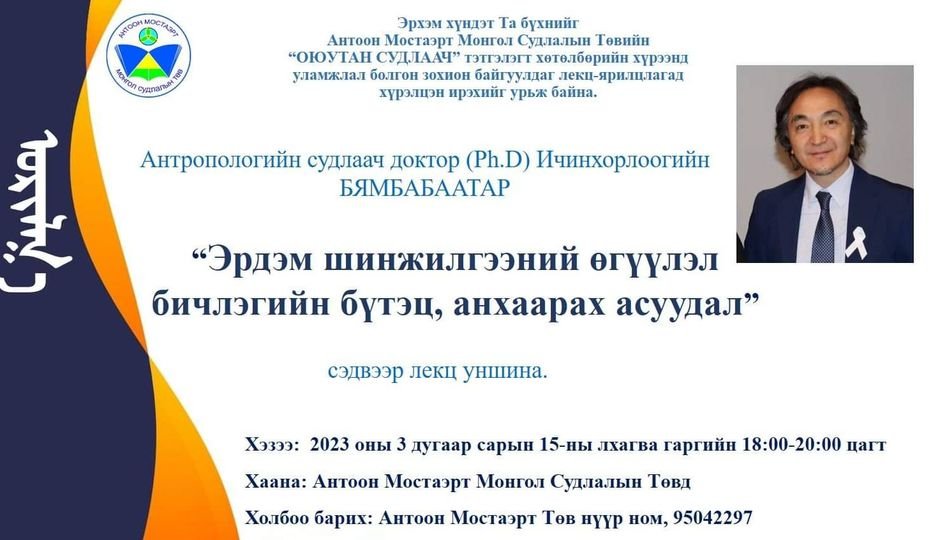"Structure of Academic Articles and Issues to Consider"
The 12th Academic Year's Second Semester Lecture-Discussion of the "Student Researcher" Scholarship Program Organized by the Antoon Motaert Mongolian Studies CenterThe lecture-discussion of the 12th academic year's second semester of the "Student Researcher" scholarship program, initiated and organized by the Antoon Motaert Mongolian Studies Center, was successfully held on Wednesday, March 15, 2023, from 18:00 to 20:30 at AMT.
The guest speaker for the lecture-discussion, Dr. (Ph.D.) I. Byambabatar, an anthropological researcher, gave a lecture on the topic "Structure of Academic Articles and Issues to Consider." He shared his extensive knowledge on issues related to publishing articles in foreign journals and the structural and methodological aspects of academic writing. He encouraged young researchers to learn the methodology of in-depth research.
Summary of the Lecture Content:
The structure of an article typically includes the following main sections: title, abstract, introduction, main body, conclusion, discussion, acknowledgments, notes, and references.
Title: Should reflect the content, grab attention, and propose an issue. The main title may include subtitles.
Abstract: The abstract should be 150-300 words summarizing the topic, the directions studied by researchers, and their viewpoints. It should give an overview of the structure of the research work.
Introduction: The introduction should present the research topic to the reader and explain its importance in a concise paragraph. It should also highlight the problem being addressed.
Overview of Research: This section provides a summary of the state of the research, synthesized results, theoretical perspectives, and timeframes. This part may be 1-4 brief paragraphs.
Unaddressed Issues: This refers to gaps left by researchers, errors made during research, or topics that were overlooked. These weaknesses in research, or areas left unexplored, should be identified.
Questions: Research questions should be posed to explore how to fill the gap or advance the research. This part suggests how to move the study forward.
New Ideas: These are new concepts that arise from the research findings or areas that were previously unexplored.
Evidence: This section should explain how the new idea or concept was derived, supported by the research results.
Methodology: The methodology section should detail the research methods and approaches used to obtain the findings.
Limitations: Discuss any potential limitations in the research process that may be beyond the researcher’s control, or challenges that could not be overcome.
Structure: A brief summary of the structure of the article.
Main Body: The main body may be divided into several sections. Each section should include empirical research results, contributions to theoretical trends, discussions, and other in-depth details.
Finally, it is important to note that in academic writing, paragraphs are crucial. A paragraph should consist of 4-10 sentences, and each sentence should not exceed 15 words. When writing a paragraph that expresses a single idea, be sure to use precise language, avoid passive voice, write complete sentences, and provide proper citations.





